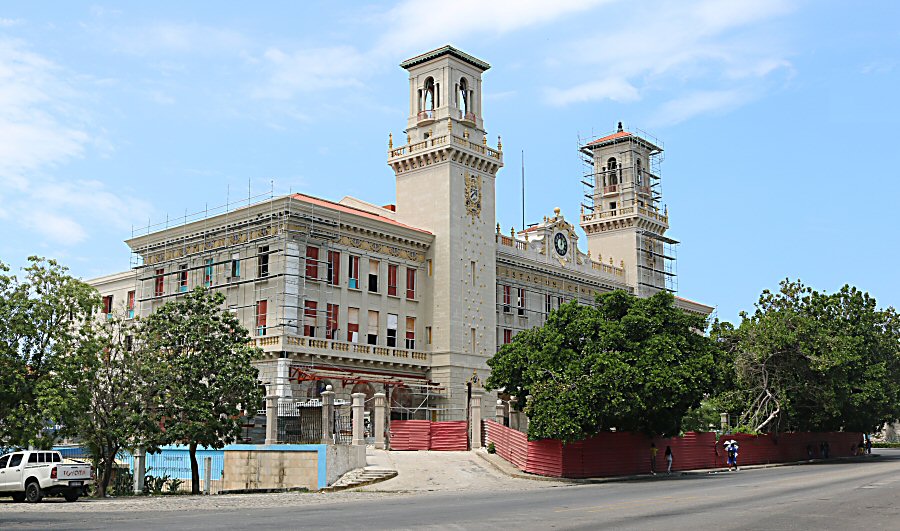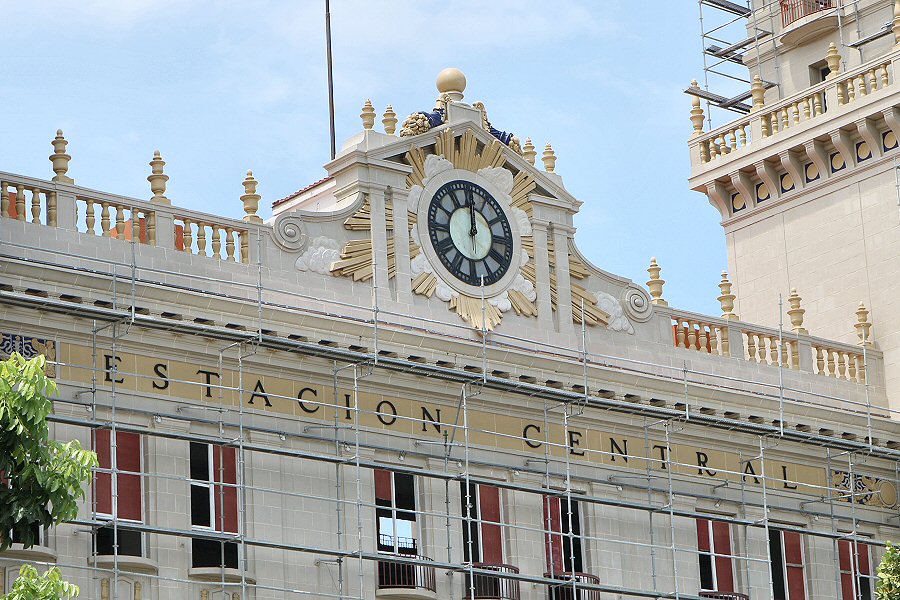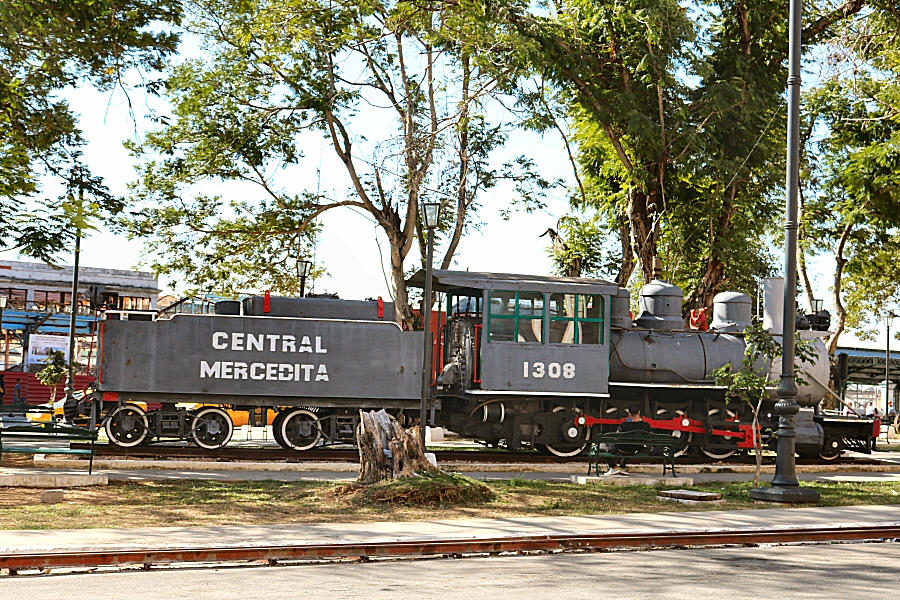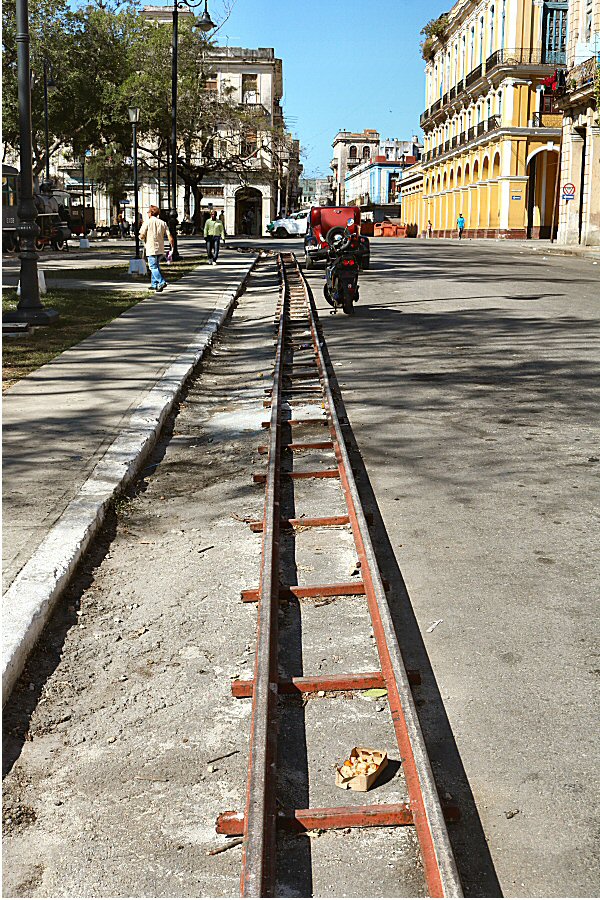
The Estación Central de Ferrocarriles is
located on the Avenida de Bélgica at its intersection with the
Arsenal street, close to the Avenida del Puerto.
HISTORY
Cuba is the first country in the Latin America in introducing the railway in the country. Claudio Martinez de Pinillo, the Count of Villanueva, had great effort in the construction of the railway in Cuba that was authorized by the Spanish Queen Isabel II in 1834. The English banks accepted to finance the railway. The first section of the railway, consisting of about 27 kilometers, was constructed between Havana and Bejucal in 1837, and the next year it was extended to Güines. At the beginning, it was used for commercial purpose, particularly for sugar cane transport, but as much as the railway net expanded, it was used also in the transport of the passengers.
During the
construction of the first sections of the railway in Cuba
more than 2.000 workers died, the majority being the slaves.
The railway station of Havana, the
Estación de Villanueva that received its name from Claudio
Martinez de Pinillo, the Count of Villanueva, was occupying
the area where El Capitolio stands today. However, it
couldn’t keep the step with the expansion of the railways in
Cuba that led to the increase in the number of the
passengers, so that during the period of the President
José Miguel Gómez
(1909-1913), the Congress of Cuba authorized to build a
modern central railway station. The suggestion of the
railway companies to construct the central station building
in the area of the demolished shipyard in Arsenal, led to
intensive debates in the Congress and in general throughout
the population, as the difference between the values of the
ground of
the Estación de Villanueva that was a private
property, and the public area of the old arsenal that would
become the property of the railroad companies, was just
about 1,5 million USD in favor of the latter at the time.
The debate reached a peak, when the congressman colonel
Severo Moleón Guerra
was killed by Silverio Sánchez Figueras, the commander of
the Liberation Army in a duel in 1910, because Severo Moleón
Guerra contradicted Silverio Sánchez Figueras that denounced
the exchange as a dirty trade. The debate ceased, when the
prominent American architect Kenneth McKenzie Muchison that
had built the stunning Hoboken Terminal of the railway
station in Hudson County, USA, was entrusted with the
project. Two years later in 1912, the monumental building of
the new Central Station of Havana was inaugurated, replacing
the 73-years old Estación de Villanueva. On the day
of the inauguration three flags flew on the building: the
flags of the USA and the UK at the top of the building, and
some meters below the Cuban flag.
Today the Estación Central de
Ferrocarriles is the largest railway station in Cuba, and serves
as the headquarter of the national railway company, Ferrocarriles
Nacionales de Cuba, the only intercity passenger rail transport
operating in the Caribbean. Since 2015 the building is under
restoration, and it is likely to reopen sometime in 2024. Once
the first phase of the restoration will be completed, a new
passenger terminal is foreseen, destined for long distance
trains, while the current one will be destined for short
distance trains.
All the services provided at the Central
Station are moved to the La Coubre station, just around the
corner.
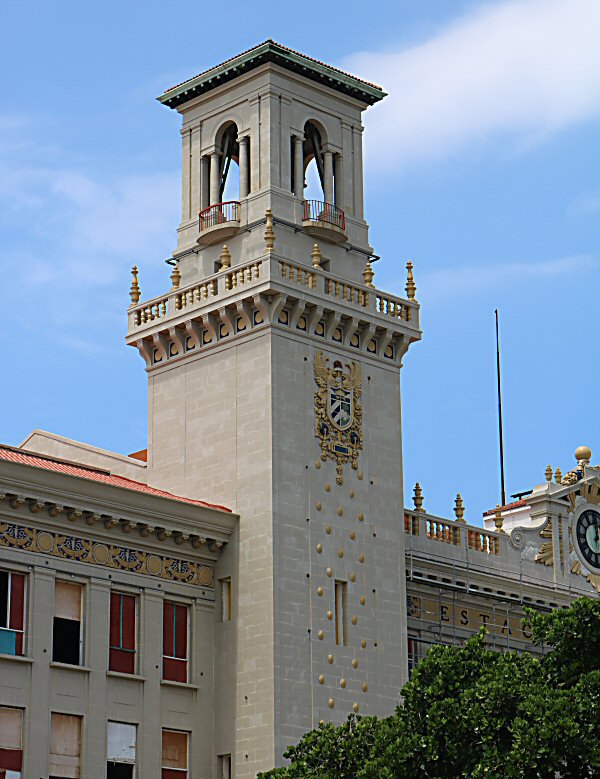 The eclectic-style building is a mixture
of different styles of architecture; motifs of the Spanish and
Italian Renaissance are combined with the elements of the
plateresque style. It has four floors, and the roof is covered
with Spanish red tiles. The multiple large windows with small
front balconies and the two towers on both sides are the
prominent features of the building. Its arrangement recalls an
European station of the 19th century, the Thüringer Bahnhof in
Leipzig, Germany.
The eclectic-style building is a mixture
of different styles of architecture; motifs of the Spanish and
Italian Renaissance are combined with the elements of the
plateresque style. It has four floors, and the roof is covered
with Spanish red tiles. The multiple large windows with small
front balconies and the two towers on both sides are the
prominent features of the building. Its arrangement recalls an
European station of the 19th century, the Thüringer Bahnhof in
Leipzig, Germany.
It seems that the American architect was
inspired by the Spanish plateresque style that can be
seen clearly at the decoration of the towers and the façade.
The façade is covered with light yellow terracotta pieces.
The square shaped towers are 38 meters high above the street
level and were constructed of steel and reinforced concrete.
The coat of arms of Cuba (on the left tower) and of Havana
(on the right tower) are embedded in front of the
towers. The handrails of the balconies on the towers and
around the whole building recall the Spanish renaissance
style. In the middle of the central facade, between the two
towers, there is a large clock that lights up at night.
At the main entrance of the Central
Station there was a post office. The ground floor contained
the passenger lounge, illuminated by skylights. It was
decorated with columns, covered by marble. There were also
information office, ticket check desk, cafeteria, some
shops, restrooms and lockers.
The upper floors were dedicated to
the offices that can be accessed by two elevators and
stairs.
There was also another waiting room
at the back of the building, in front of the roofed
passenger platforms. Passenger trains enter the station via
a steel viaduct, Los Elevados, that measures 900 m long. It
was constructed on transversal arches with columns whose
heights range from 3,2 to 7, 3 m.
The platforms used for the transport
of the commercial products, are on the east of the station.
These platforms that occupy an area of 140.000 m2, are 6
meters lower than that of the passenger platforms.
In front of the building there is a
small square paved with cobblestones and enclosed by an iron
and cement fence.
On the Arsenal street several old
locomotives are placed, but Junta de Fomento, the oldest
preserved locomotive in Cuba, is on the display in the
Railway Museum. Junta de Fomento that debuted in 1843, is
the symbol of the beginning of the railroad transport in
Cuba. It was declared a national monument.
